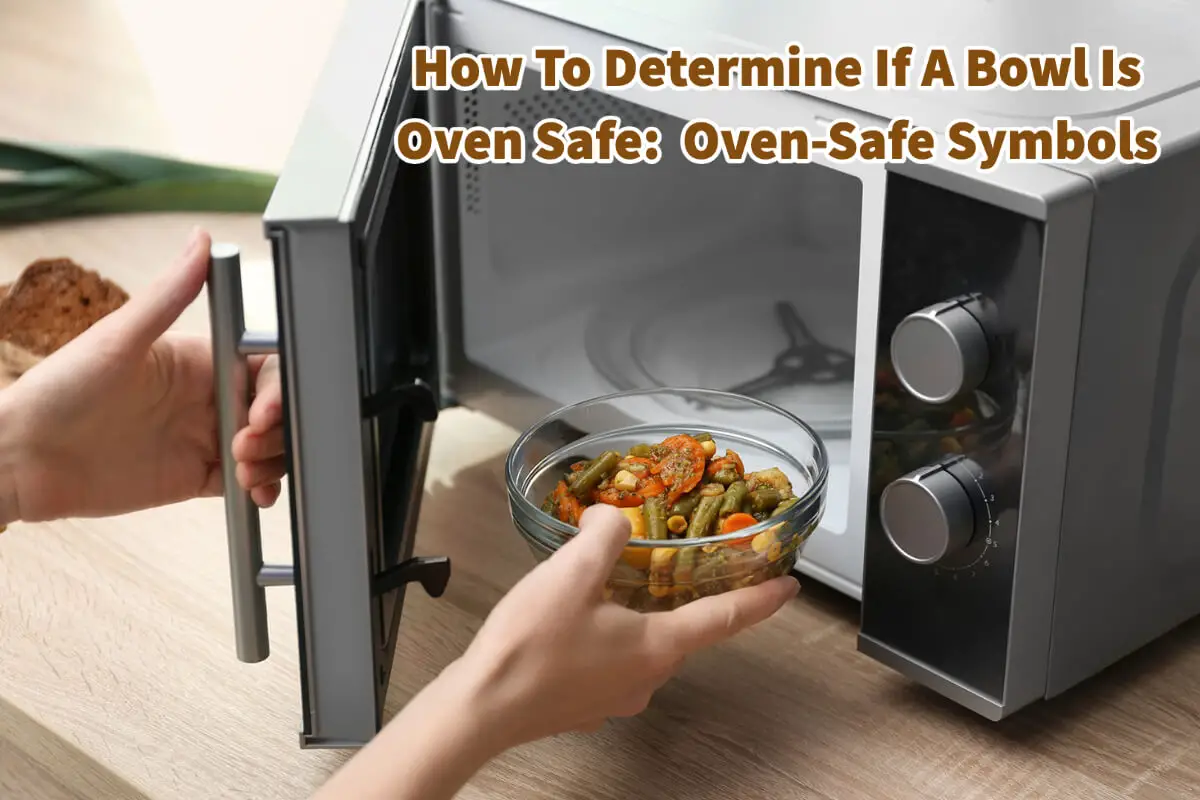When it comes to cooking and baking, it’s essential to have the right tools, including oven-safe bowls. But how can you be sure if a bowl is safe in the oven?
Some oven-safe symbols and indicators can help you determine the suitability of a bowl for oven use. Read on as we will explore the various oven-safe symbols commonly found on bowls and decipher their meanings. Understanding these symbols is crucial for preventing disasters in the kitchen and ensuring your cookware can withstand the oven’s high temperatures.
Table of Contents
- How To Determine If A Bowl Is Oven Safe: The Importance Of Oven-Safe Symbols And Materials
- Materials Suitable For Oven Use
- Signs Of Non-Oven Safe Dishes
- Risks Of Using Non-Oven Safe Dishes
- Additional Tips For Safe Oven Use
- Frequently Asked Questions
- Related Content
How To Determine If A Bowl Is Oven Safe: The Importance Of Oven-Safe Symbols And Materials
Using the right cookware is essential for ensuring a safe and successful cooking experience. When it comes to using bowls or any other dishes in the oven, it’s crucial to determine their oven safety.
Read on as we will guide you through identifying if a bowl is an oven-safe, explaining the significance of oven-safe symbols, and highlighting the potential risks of using non-oven-safe dishes.
The Oven-Safe Symbol
One of the easiest ways to determine if a bowl is oven-safe is by checking for an oven-safe symbol. This symbol is typically located on the underside of the dish and is usually represented by a square with either waves or lines.
The symbol is designed to withstand high temperatures and indicates that the bowl has been tested and approved for oven use.
Materials Suitable For Oven Use
Certain materials are more suitable for oven use because they can withstand high temperatures without warping or releasing harmful substances.
Here are some oven-safe materials commonly used in cookware:
Metals Such As Stainless Steel And Cast Iron
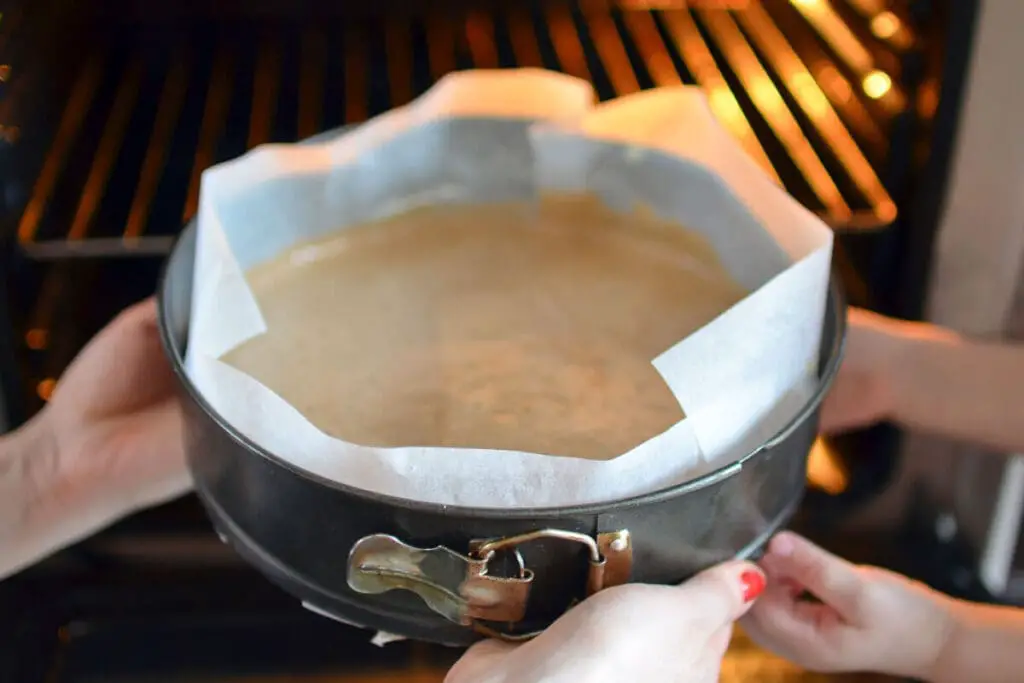
These materials are excellent for oven use as they can endure high temperatures without compromising their structure or releasing toxins into food. They distribute heat evenly, ensuring thorough and consistent cooking.
Stoneware And Ceramics
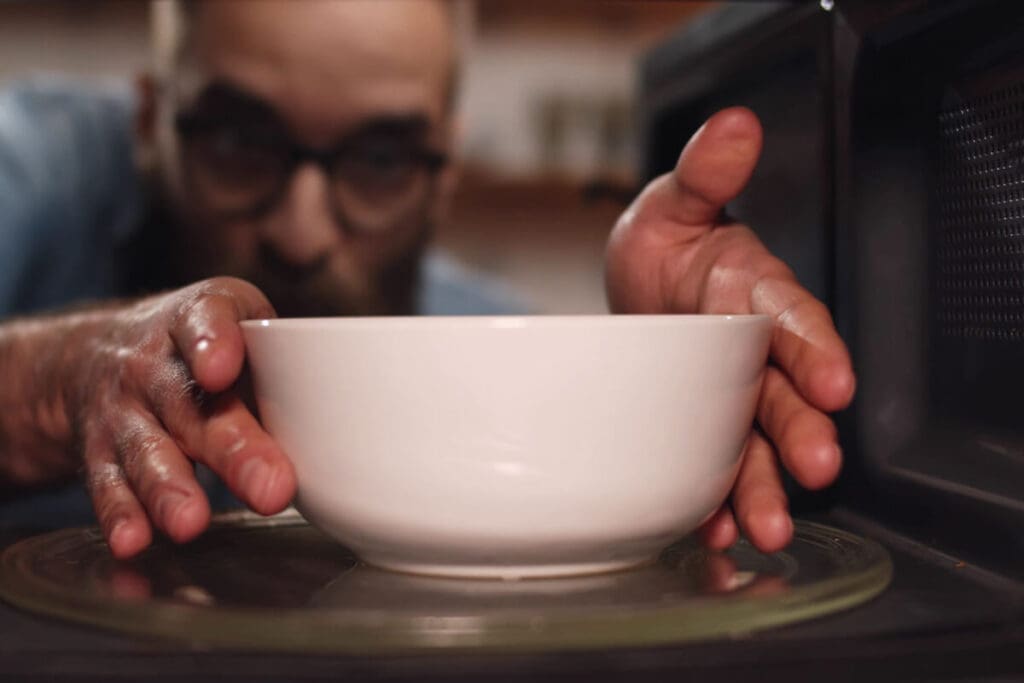
Some stoneware and ceramic bowls are labeled as oven safe and can be used for baking or reheating. However, it is essential to check for any temperature limitations specified by the manufacturer.
Glass
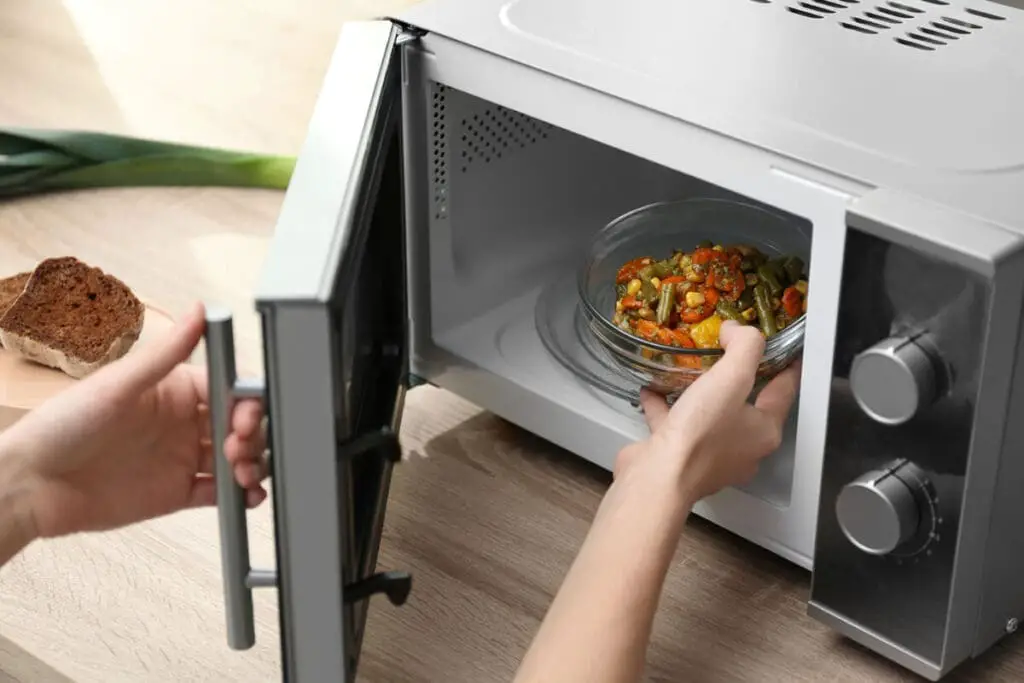
Many glass bowls and dishes are oven safe, but it is crucial to read the manufacturer’s guidelines as some types of glass may not withstand extreme temperature changes.
Additionally, avoid using glassware directly from the freezer in a hot oven, as it may shatter due to thermal shock.
Signs Of Non-Oven Safe Dishes
Without an oven-safe symbol or clear indications from the manufacturer, it’s essential to be cautious when using certain dishes in the oven.
Here are some signs that suggest a bowl is not oven safe:
Non-metal Parts
Dishes with non-metal components like wooden or plastic handles, lids, or decorations should not be used in the oven. When exposed to high temperatures, these materials can melt, warp, or release toxic fumes.
Cracks Or Chips
Bowls with cracks, chips, or visible damage should never be used in the oven. These imperfections can expand under heat, leading to breakage or even a potential safety hazard.
Thin Or Lightweight Materials
Thin or lightweight bowls may not be able to withstand the intense heat of the oven. They can warp, buckle, or even cause uneven cooking.
Risks Of Using Non-Oven Safe Dishes
Using dishes that are not oven-safe can have several undesirable consequences. Here are some potential risks associated with using non-oven-safe bowls:
Structural Damage
Non-oven-safe dishes can warp, melt, or break when exposed to high temperatures. This can result in irreversible damage to the dish, rendering it unusable.
Release Of Toxins
Certain materials, such as plastics or low-quality ceramics, may release harmful chemicals or toxins into your food when heated above their recommended limits. These substances can pose serious health risks if ingested.
Uneven Cooking
Non-oven safe bowls may conduct heat poorly or unevenly. This can lead to inconsistent cooking, with some portions of the food being undercooked while others are overcooked.
Safety Hazards
Using non-oven safe dishes can lead to safety hazards, such as breakage or shattering. When a dish is not designed to withstand high temperatures, it may crack or explode in the oven, causing hot food and broken glass or ceramics to scatter, potentially causing burns or injuries.
Damage To The Oven
Non-oven-safe dishes can also damage your oven. As they heat up, they may release oils, chemicals, or residue that can accumulate on the oven’s interior surfaces. This can lead to unpleasant odors, smoke, or even fires.
Additional Tips For Safe Oven Use
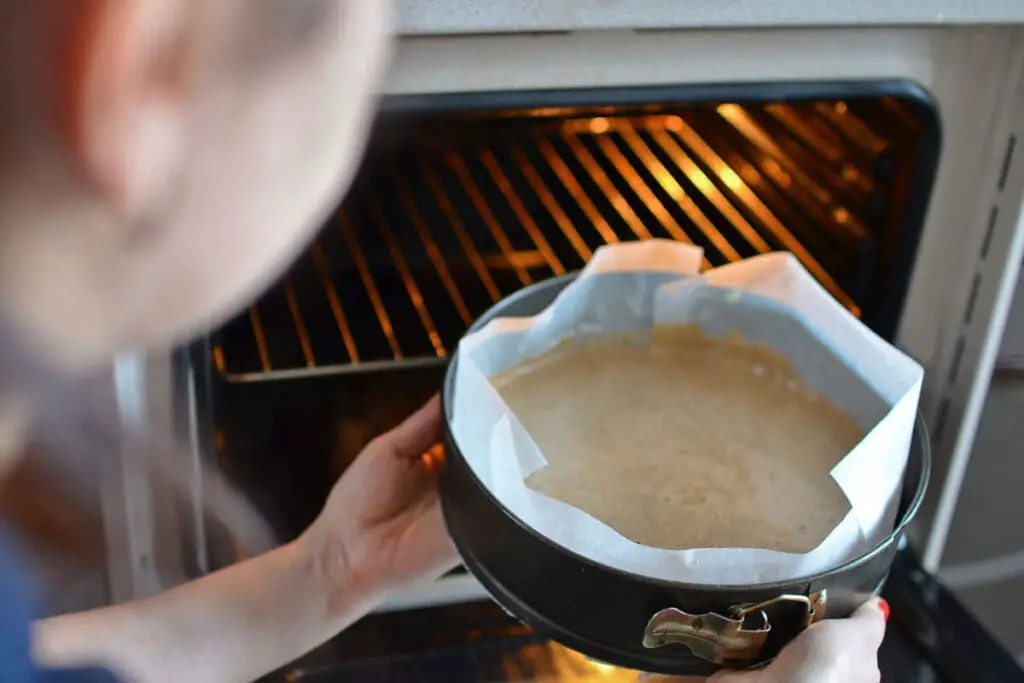
Here are some additional tips and things to remember to know if the bowl is oven safe.
Read The Manufacturer’s Instructions
Always consult the manufacturer’s guidelines for specific information on oven safety for your dishes. They provide valuable insights into the temperature limitations, recommended usage, and care instructions.
Preheat The Oven Carefully
Preheating the oven gradually is essential to avoid subjecting the dish to extreme temperature changes when using oven-safe dishes. Placing a cold dish in a hot oven can cause it to crack or shatter.
Use Appropriate Oven Mitts
Always use oven mitts or pot holders to protect your hands from burns when handling hot dishes. Be cautious and carefully handle dishes, especially when removing them from the oven.
Allow For Proper Cooling
After removing a dish from the oven, allow it to cool down before washing or placing it on a cold surface. Sudden temperature changes can also cause breakage or damage to the dish.
Determining if a bowl is oven safe is crucial for safe and successful cooking experiences. By checking for the oven-safe symbol and considering the materials used in the dish’s construction, you can ensure that your cookware is suitable for oven use.
Using non-oven-safe dishes can result in structural damage, the release of toxins, uneven cooking, and safety hazards. Always prioritize safety by choosing oven-safe bowls and following proper usage guidelines to enhance your cooking experience and protect your well-being.
Find out more about how Mondoro can help you create, develop, and manufacture excellent home decor and furniture products – don’t hesitate to contact me, Anita. Check out my email by clicking here or become a part of our community and join our newsletter by clicking here.
Mondoro gives out a FREE Lookbook to anyone interested. You can receive a copy of our latest Lookbook by clicking here.
Listen to our Podcast called Global Trade Gal. You can find it on all major podcast platforms. Try out to listen to one of our podcasts by clicking here.
Subscribe to our Mondoro Company Limited YouTube Channel filled with great videos and information by clicking here.
Frequently Asked Questions
What does “oven-safe” mean for a bowl?
Oven-safe refers to a bowl’s ability to withstand the high temperatures of an oven without cracking, breaking, or releasing harmful substances into your food.
Are all bowls oven safe?
No, not all bowls are oven safe. Different materials have different heat resistance levels, so it’s important to check for specific oven-safe symbols or indications.
What are the common oven-safe symbols found on bowls?
Common symbols include a stylized oven icon, the word “oven-safe,” or a temperature rating usually shown in degrees Celsius or Fahrenheit.
How can I identify the oven-safe symbols on a bowl?
Look for symbols engraved or printed on the bottom of the bowl. They might be accompanied by additional information about the bowl’s safe temperature range.
What is the significance of the oven icon symbol?
The oven icon indicates that the bowl is safe to use in the oven. However, you should still check for any temperature limitations associated with the symbol.
Is there a temperature range for oven-safe bowls?
Yes, some bowls have temperature ranges specified alongside the oven-safe symbols. This range indicates the highest and lowest temperatures the bowl can withstand without damage.
Can I use any bowl in a microwave if it’s oven safe?
Not necessarily. While a bowl might be oven safe, it doesn’t guarantee its safety in a microwave. Microwaves can interact differently with materials, so look for separate microwave-safe symbols if you plan to use the bowl in a microwave.
What materials are commonly used for oven-safe bowls?
Materials like tempered glass, ceramic, stoneware, and certain metals (like stainless steel) are often used for oven-safe bowls due to their ability to handle high temperatures.
What should I do if I can’t find any oven-safe symbols on my bowl?
If you can’t find clear oven-safe symbols, it’s best to avoid using the bowl in the oven to prevent potential damage or safety risks.
Can oven-safe bowls be used on stovetops as well?
Oven-safe bowls are typically designed for use in ovens, not stovetops. Using them directly on a stovetop could lead to uneven heating, cracking, or damaging the bowl. Always check the manufacturer’s guidelines for proper usage.
Related Content
What Are Some Metal Home Decor Products?
Metal is a material that is used a lot in home decor and home furniture product design and development. For centuries metal has been used in home decoration and home decor.
This is because the metal material is versatile, has to appeal, is durable, hygienic, and green material. We have picked out some of our top 6 choices of simple yet elegant products that use metal structures combined with glass or white marble.
To see our top 6 picks for metal home decor products, you can read our blog on Metal Home Decor Products and Accessories That We Love by clicking here.
How Can You Tell If A Ceramic Dish Is Oven Safe?
If the ceramic dish is oven-safe, there should be a symbol or words at the bottom that states the dish is oven-safe. If there are no symbols, you can contact the manufacturer to determine if the ceramic dish is oven-safe. To ensure a dish is oven-safe, a professional agency should test the ceramic dish to verify it is oven-safe.
You can read our blog on How Can You Tell If A Ceramic Dish Is Oven Safe? by clicking here.
How Does The Firing Temperature Affect Ceramics Production?
If a ceramic piece is not fired at the correct temperature, it will make a huge difference in the final product’s outcome. It is also essential that the correct kiln is used for the production process. This is because many things must be considered when using a kiln to fire ceramics. Many things can cause the final product to fail or crack during the firing process.
You can learn more by reading our blog, How Does The Firing Temperature Affect Ceramics Production?, by clicking here.

